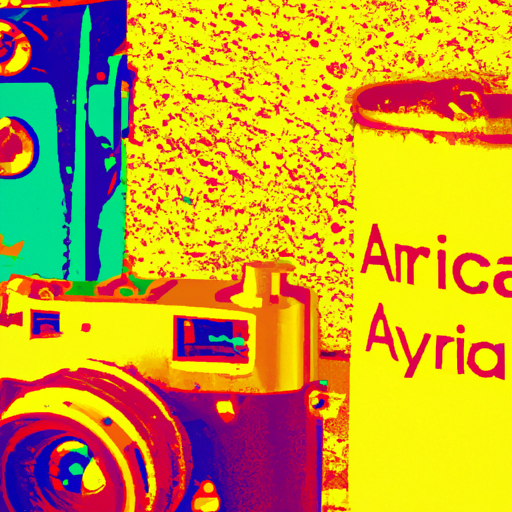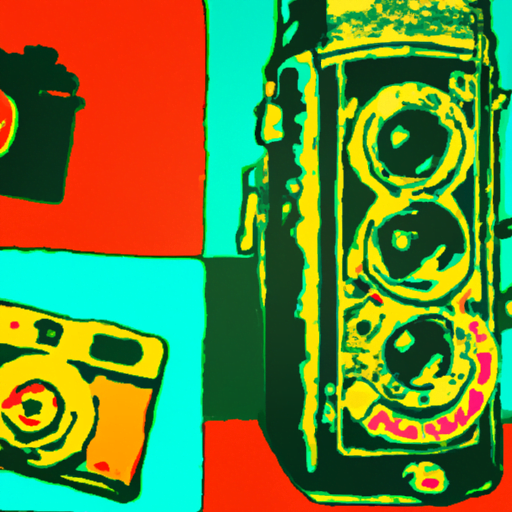
-
Table of Contents
- The Art of Visual Exploration: Experimenting with Mixed Media
- What is Mixed Media Art?
- A Brief History of Mixed Media Art
- Techniques and Approaches in Mixed Media Art
- Collage
- Layering
- Combining Traditional and Digital Media
- Texturing
- The Benefits of Mixed Media Art
- Freedom of Expression
- Exploration and Experimentation
- Visual Interest and Complexity
- Flexibility and Adaptability
- Case Studies: Artists Pushing the Boundaries of Mixed Media Art
- Robert Rauschenberg
- Tracey Emin
- Jasper Johns
- Conclusion
The Art of Visual Exploration: Experimenting with Mixed Media

Visual exploration is an essential aspect of the artistic process. It allows artists to experiment with different materials, techniques, and mediums to create unique and captivating artworks. One such approach to visual exploration is through the use of mixed media. In this article, we will delve into the world of mixed media art, exploring its history, techniques, and the benefits it offers to artists.
What is Mixed Media Art?
Mixed media art refers to artworks that incorporate a combination of different materials and mediums. It is a versatile and dynamic form of artistic expression that allows artists to break free from traditional boundaries and explore new possibilities. By combining various elements such as paint, collage, photography, found objects, and digital media, artists can create visually stunning and conceptually rich artworks.
A Brief History of Mixed Media Art
The use of mixed media in art can be traced back to ancient times. In ancient Egypt, for example, artists used a combination of paint, ink, and gold leaf to create intricate and vibrant artworks. Similarly, during the Renaissance period, artists like Leonardo da Vinci and Michelangelo experimented with different materials and techniques to push the boundaries of traditional art.
However, it was not until the 20th century that mixed media art gained significant recognition. The Dada and Surrealist movements, for instance, embraced the use of unconventional materials and techniques to challenge traditional notions of art. Artists like Marcel Duchamp and Salvador Dali incorporated found objects, collage, and assemblage into their artworks, blurring the lines between art and everyday objects.
Since then, mixed media art has continued to evolve and gain popularity. Contemporary artists like Robert Rauschenberg, Jasper Johns, and Tracey Emin have pushed the boundaries of mixed media art, incorporating new technologies and unconventional materials into their works.
Techniques and Approaches in Mixed Media Art
There are numerous techniques and approaches that artists can employ when working with mixed media. Here are some of the most common ones:
Collage
Collage is a technique that involves combining different materials, such as paper, fabric, photographs, and found objects, to create a cohesive artwork. Artists can cut, tear, and layer these materials to create visually interesting compositions. Collage allows artists to play with texture, color, and form, resulting in unique and visually engaging artworks.
Layering
Layering is a technique that involves building up multiple layers of different materials and mediums to create depth and texture in an artwork. Artists can use a combination of paint, ink, paper, and other materials to create intricate and visually captivating compositions. Layering allows artists to experiment with transparency, opacity, and texture, adding complexity and visual interest to their artworks.
Combining Traditional and Digital Media
In today’s digital age, many artists are exploring the combination of traditional and digital media in their artworks. By incorporating elements of digital art, such as digital prints, photography, and digital manipulation, artists can create visually stunning and conceptually rich artworks. This approach allows artists to push the boundaries of traditional art and explore new possibilities offered by technology.
Texturing
Texturing is a technique that involves adding texture to an artwork using various materials and techniques. Artists can use materials such as sand, fabric, modeling paste, and even natural elements like leaves and twigs to create texture and depth in their artworks. Texturing adds a tactile quality to the artwork, making it visually and physically engaging.
The Benefits of Mixed Media Art
Mixed media art offers several benefits to artists, making it a popular choice among many. Here are some of the key advantages:
Freedom of Expression
Mixed media art allows artists to break free from traditional boundaries and explore new possibilities. By combining different materials and mediums, artists can express their ideas and emotions in unique and unconventional ways. This freedom of expression allows artists to push the boundaries of their creativity and create artworks that are truly personal and meaningful.
Exploration and Experimentation
Mixed media art encourages artists to experiment with different materials, techniques, and mediums. This experimentation allows artists to discover new ways of working and explore their artistic potential. By trying out new techniques and materials, artists can expand their artistic repertoire and develop their own unique style.
Visual Interest and Complexity
The combination of different materials and mediums in mixed media art adds visual interest and complexity to the artwork. The use of texture, layering, and collage creates visually captivating compositions that engage the viewer’s senses. Mixed media art often invites the viewer to explore the artwork more closely, discovering new details and meanings with each interaction.
Flexibility and Adaptability
Mixed media art offers artists a high degree of flexibility and adaptability. Artists can choose from a wide range of materials and techniques, allowing them to tailor their approach to suit their artistic vision. This flexibility also allows artists to incorporate new technologies and materials into their artworks, keeping their practice fresh and relevant.
Case Studies: Artists Pushing the Boundaries of Mixed Media Art
Several contemporary artists have embraced mixed media art and pushed its boundaries to create groundbreaking artworks. Here are a few notable examples:
Robert Rauschenberg
Robert Rauschenberg was a pioneering artist known for his innovative use of mixed media. He incorporated found objects, photographs, and everyday materials into his artworks, blurring the lines between art and life. Rauschenberg’s “Erased de Kooning Drawing” is a prime example of his experimental approach, where he erased a drawing by Willem de Kooning, challenging traditional notions of authorship and originality.
Tracey Emin
Tracey Emin is a British artist known for her confessional and autobiographical artworks. She often combines different materials, such as neon lights, embroidery, and text, to create emotionally charged and deeply personal artworks. Emin’s “My Bed” is a powerful mixed media installation that incorporates her own bed, personal belongings, and various other materials, offering a raw and intimate glimpse into her life.
Jasper Johns
Jasper Johns is an American artist known for his iconic mixed media artworks that blur the boundaries between painting and sculpture. He often incorporates found objects, stenciled letters, and encaustic paint into his artworks, creating visually rich and conceptually layered compositions. Johns’ “Flag” series is a prime example of his innovative use of mixed media, where he explores themes of identity, patriotism, and symbolism.
Conclusion
Mixed media art is a powerful and versatile form of artistic expression that allows artists to explore new possibilities and push the boundaries of traditional art. By combining different materials, techniques, and mediums, artists can create
